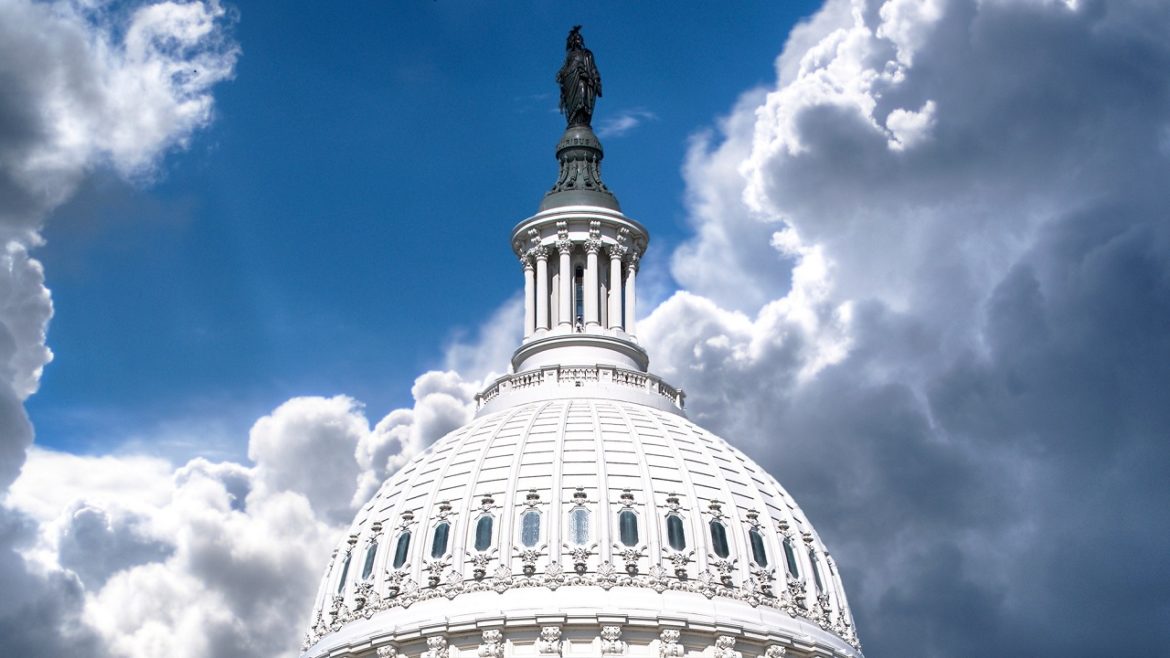Gold has all the potential to go unprecedentedly high. But silver will be gold on
Site:
Precious metals news
Oct 4, 2023 - 06:42:15 PDT
Jeff Gundlach of DoubleLine Capital warns that rising bond yields indicate an imminent U.S. recession. He emphasized the rapidly de-inverting U.S. Treasury yield curve and stated that even a slight increase in the unemployment rate will trigger a recession alert. Historically, an inverted yield curve has foreshadowed every U.S. recession since 1969. Other Wall Street experts also foresee potential economic turmoil due to the bond-market shifts.
Rising interest rates are destabilizing Wall Street's outlook. The Federal Reserve's previous low-rate stance is being upended, leading to significant financial market declines. Banks face major risks from increased government debt. As foreign investors and the Federal Reserve reduce their holdings in U.S. government bonds, fears of an impending recession intensify. Critics argue the Fed's aggressive actions might necessitate policy reversals.
Surging interest rates, coupled with escalating investor wariness and excessive borrowing in recent years, have plunged numerous developing countries into severe debt predicaments. As these nations grapple with the repercussions, resolving this escalating crisis will dominate discussions at the upcoming IMF and World Bank annual meetings in Marrakech.
Mortgage rates soared last week, leading to a 6% decrease in mortgage demand, hitting its lowest point since 1996, according to the Mortgage Bankers Association. The 30-year fixed-rate mortgage interest surged to 7.53%, up from 6.75% a year ago. Consequently, applications to refinance homes dropped 7% and purchase applications fell 6%, marking a 22% decline from the previous year. The spike in rates is discouraging potential homebuyers, and while adjustable-rate mortgage applications rose, overall confidence in the mortgage market is dwindling
Growth prospects and concerns over mounting government debt are driving long-term interest rates to a 16-year high, threatening economic stability. The Federal Reserve's attempts to address inflation with higher short-term rates have been overshadowed by this unexpected surge. The 10-year Treasury note yield has reached levels unseen since the 2007 crisis, causing significant stock market declines. If these elevated borrowing costs persist, they could hinder global and U.S. economic momentum, leaving experts puzzled over the precise causes of this rapid ascent.
ADP's job report showed a significant drop, adding only +89k jobs, the lowest since January 2021. Sectors like Manufacturing and Professional & Business Services experienced notable job losses. Additionally, wages have consistently declined over the past year. The Employee Motivation and Commitment Index unveiled dwindling worker motivation, which could negatively impact productivity. The reasons are ambiguous, but the decline suggests the need for workers to adapt to the changing job market. The slide in work motivation further underscores the shortcomings of 'Bidenomics'.
Central bank gold buying continues to sizzle.Central banks globally added a net 77 tons to their reserves in August, according to the latest data compiled by the World Gold Council.
You can hold physical gold and silver in an IRA, and there are certain advantages to doing so.Historically, IRAs with an allocation to precious metals perform better than IRAs with no exposure to silver or gold. There are also tax benefits when contributing to an IRA.
The national debt recently blew past $33 trillion. And yet with the exception of a few intransigent Republicans, there is virtually no discussion about reining in spending.Congress managed to avoid a government shutdown by passing a continuing resolution that did very little to address spending. But as Ron Paul points out, there was a small victory in the CR that could bode well for the future.
I recently ran across a video produced by CNBC back in July 2020. It is titled "Why Printing Trillions of Dollars May Not Cause Inflation."That aged poorly, didn't it?And people wonder why I keep saying you should be skeptical of mainstream narratives.
 SILVER SYMPOSIUM PRESENTATION: The Energy Cliff & Move From Building Wealth To Protecting Wealth
SILVER SYMPOSIUM PRESENTATION: The Energy Cliff & Move From Building Wealth To Protecting WealthOctober 4, 2023
Here is my Silver Symposium presentation for SRSrocco Report members. Interestingly, while I presented this information to the attendees, another LIGHT-BULB went off in my head. It is very IMPORTANT that you all watch this presentation because I also believe it will CONNECT MORE DOTS...
UAE gold prices are nearing this year's low at Dh205.00 per gram for 22K, prompting a shopping spree among locals and tourists alike. Consumers, showcasing astuteness in navigating price drops, are actively locking in rates and making purchases, while also engaging in advanced bookings for future buys. This surge in gold trading, occurring amidst a bustling tourist season and aligning with festive buying, spotlights gold's enduring allure as a favorable investment and purchase. With a keen eye on price movements and robust demand, the precious metal retains its lustrous appeal in the market.
Amid a turbulent bond market, investors are witnessing soaring yields and waning confidence, challenging the staple 60/40 investment strategy and prompting considerations of alternatives like gold. Bonds, once a reliable hedge and stabilizer, now falter amid stubborn inflation, potentially steering portfolios toward riskier strategies and injecting further instability into an already precarious financial environment.
Oct 3, 2023 - 13:15:42 PDT
The Fed, even after reducing its balance sheet from $8.97 trillion, still hoards over $8 trillion, highlighting a troubling persistence in shaky financial strategies. While engaging in loss-concealing tactics via the $108 billion Bank Term Funding Program (BTFP) program, it merely offers a smokescreen for the banks and the blunders from a decade of speculative encouragement and QE doubling since 2020. With surging small business bankruptcies in 2023 and the inability to mitigate the tangible losses from them and commercial real estate, the Fed's strategies teeter on a precarious edge, echoing larger, looming financial distress.
Despite a seemingly favorable environment with a 67% public approval rate, the resurgence of organized labor and strikes under President Joe Biden's administration starkly highlights the intensifying income disparity and discontent among American workers. As 75,000 healthcare workers gear up to strike and even auto workers gain presidential picket line support, the underlying narrative reveals a system perceived as fundamentally unfair to hardworking Americans amidst escalating wealth inequality.
Recurrent government shutdowns and a glaring lack of fiscal responsibility plague Washington once more. Despite a history of shutdowns, current “stopgap” measures, like the 45-day operation extension, merely postpone inevitable financial consequences, fostering an environment of continual crisis. The continual use of "Continuing Resolutions" since 2008 has exponentially compounded spending, exploding national debt while revenues stagger behind. While officials might claim transient victories in short-term solutions, the chronic avoidance to make firm, often unpopular, governing decisions merely defers and amplifies future economic fallout.
The latest Federal Reserve study reveals a grim financial picture for 80% of American households, whose bank deposits and liquid assets, adjusted for inflation, have dipped below the levels seen at the pandemic's onset in March 2020. While the wealthiest 20% of households have managed to retain an 8% increase in cash savings since the pandemic began, the bottom two-fifths have experienced an 8% drop, and the middle class has seen their savings dwindle below pre-pandemic levels. This economic disparity underscores a widening financial gap amidst ongoing challenges.
The Bureau of Labor Statistics (BLS) reported a suspiciously high 9.61 million job openings in August, amid an economic environment that suggests otherwise. With a record low 31% response rate to the Job Openings and Labor Turnover Survey (JOLTS), approximately 70% of the job openings figure is an estimate. The stark discrepancy between skyrocketing job openings and minor changes in quits and hires casts a shadow over the data's credibility, fueling skepticism towards the Biden administration’s economic reporting amidst other ongoing economic challenges.
Bank of America warns of a surge in private credit defaults, predicting a rate of 5% by early 2024, exceeding those in the syndicated loan market if high-interest rates persist. The looming issue stems from an anticipated one-third of deals maturing within the next two-and-a-half years and contrasts with a 3% estimated default rate for broadly-syndicated loans. Unaddressed issues within private debt, especially unitranches and older, highly levered deals, risk materializing in the near term, posing substantial financial threats.
UBS predicts significant sell-offs from computer-driven hedge funds, expecting $20-$30 billion in sales over the next two weeks amid declining stock markets, according to a note seen by Reuters. These anticipated outflows, responding to recent underperformance, could further amplify the downtrend in share values. Notably, this marks the first instance of these hedge funds being net short in equity markets since November 2022.












